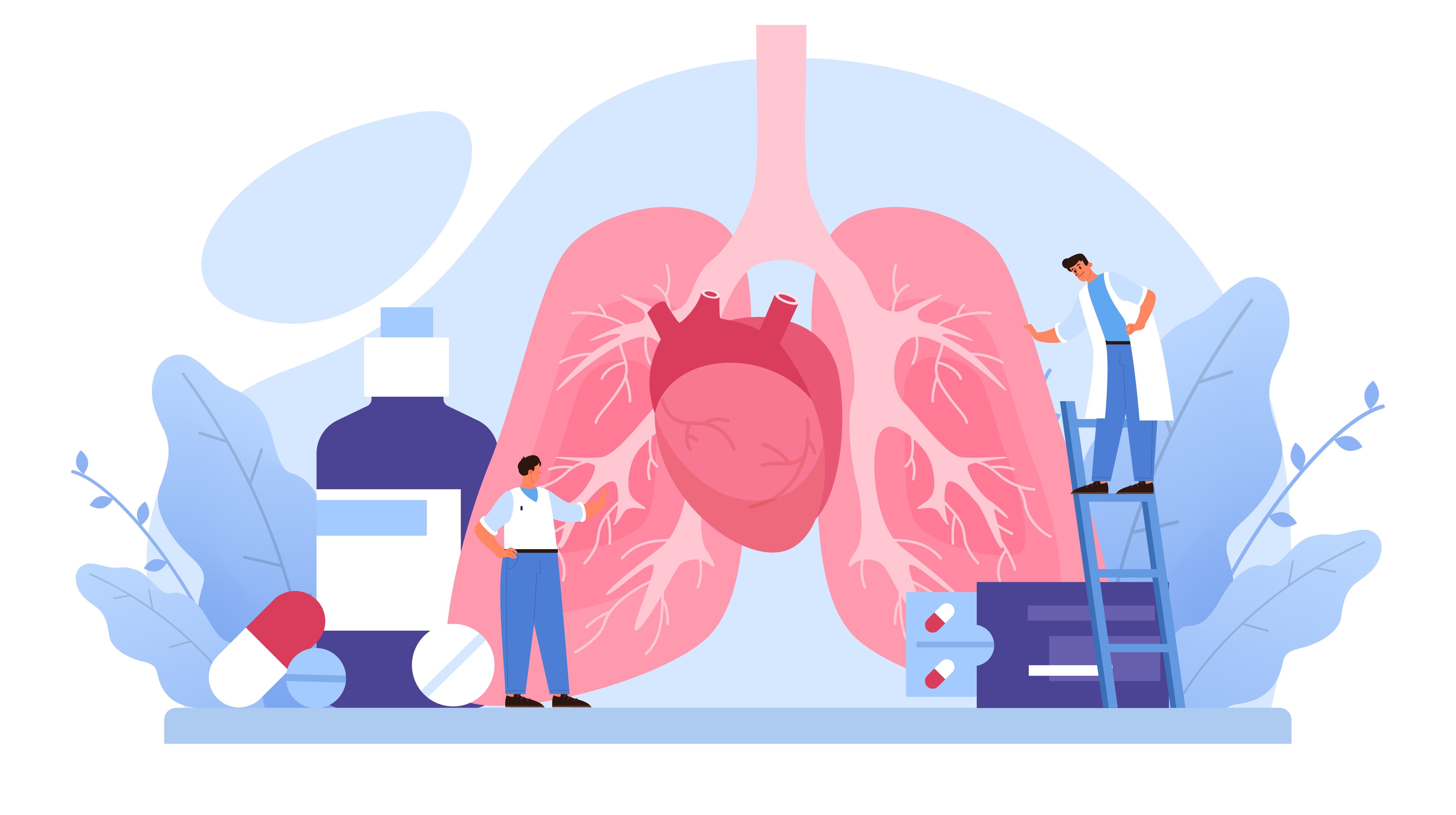Transudate Vs Exudate - What Is Difference Between The Two?
Transudate vs. exudate in the human body varies like fluid accumulation. Transudate is fluid accumulation induced by systemic diseases that change blood vessel pressure, forcing the fluid to exit the vascular system. Exudate is fluid that accumulates from tissue leakage caused by inflammation or local cellular injury.
Author:Suleman ShahReviewer:Han JuJan 10, 202310.8K Shares401.6K Views

Transudatevs. exudatein the human body varies like fluid accumulation. Transudate is fluid accumulation induced by systemic diseases that change blood vessel pressure, forcing the fluid to exit the vascular system. Exudate is fluid that accumulates from tissue leakage caused by inflammationor local cellular injury.
Transudate Causes
- Partially collapsed lung tissue (atelectasis):This occurs due to increasing negative pressure inside the lung cavity.
- Leakage of cerebrospinal fluid into the lung cavity:Thoracic spine injury, malfunction of the ventriculoperitoneal (VP) shunt
- Heart attack
- Dysfunction of the liver
- Albumin deficiency in the blood (hypoalbuminemia)
- Iatrogenous (misplaced catheter into the lung)
- The renal syndrome
- Dialysis via the peritoneum
- Urinary system obstruction resulting in urine backlog in the body (urinothorax due to obstructive uropathy)
Exudate Causes
- Abscess in the tissues around the lung, fluid in the belly (ascites), meigs syndrome, pancreatitis
- Churg-Strauss disease, lupus, rheumatoid arthritis, and Wegener granulomatosis are examples of connective-tissue diseases.
- Endocrine: hypothyroidism (low thyroid), ovarian hyperstimulation
- Drug-induced esophageal perforation, a feeding tube in the lung
- Infectious: lung abscess, bacterial pneumonia, fungal illness, parasites, TB
- Acute respiratory distress syndrome (ARDS), asbestosis, pancreatitis, radiation, sarcoidosis, and excessive urea levels in the blood are examples of inflammatory conditions (uremia)
- Lymphatic disorders include chylothorax (fluid around the lungs), lymph node malignancy, and lymphangiectasia (over-dilation of lymph vessels)
- Cancer, lymphoma, leukemia, mesothelioma, and paraproteinemia are all examples of malignancies.
Transudate Vs Exudate
The serous body cavities are potential areas bordered by mesothelium surrounding the lungs, heart, and belly. They usually include a small quantity of fluid, an ultrafiltrate of plasma. Fluid may collect if the production and resorption of this ultrafiltrate are not balanced, leading to an outflow. Transudates and exudates are two types of effusions. Transudates are often bilateral and result from increased capillary hydrostatic pressure or reduced oncotic pressure caused by congestive heart failure, fluid overload, cirrhosis, or hypoalbuminemia. Exudates are often unilateral and are caused by increased capillary permeability or impaired lymphatic resorption due to infection, connective tissue disease, pancreatitis, or malignancy.
Several laboratory tests, including pH, total protein, lactate dehydrogenase (LD), amylase, glucose, white cell count, and differential, may assist identify transudates from exudates. For the effusion to be defined as an exudate, just one of these values must fall within the exudate range. Large chemical panels on bodily fluids should not be requested.
To differentiate between exudates and transudates, if the patient's blood total protein is normal and the pleural fluid protein level is less than 25g/L, the fluid is a transudate. The fluid liquid exudate if the protein concentration in the pleural fluid exceeds 35g/L.
If the protein concentration in the pleural fluid is between 25 and 35 g/L, the Lights criterion may be utilized. Exudates have greater protein concentrations, LD activity, and lower pH and glucose levels than transudates. An exudate's protein content frequently surpasses three g/dL. Exudate LD activity exceeds the serum's standard upper limit by 0.67 times.
Classification Of Pleural Effusions
- A pleural effusion is a fluid collection inside the pleural space.
- Thoracentesis and pleural fluid analysis aid in determining the underlying reason.
- Depending on the cause, the pleural fluid might be classified as transudate or exudate.
- Transudates develop as a result of situations that raise the pulmonary capillary hydrostatic pressure or reduce the capillaryonco. This causes a buildup of protein-deficient pleural fluid. CHF, nephrotic syndrome, cirrhosis, hypoalbuminemia, and pulmonary embolism are common causes.
- Exudates form due to diseases that produce inflammation or increased pleural vascular permeability. This results in the buildup of protein-rich pleural fluid and cells. Pneumonia, malignancy, TB, and pulmonary embolism are all common causes.
- If at least one of the following requirements is present, the fluid is declared an exudate, according to Light's criterion. A ratio of pleural fluid protein to serum protein higher than 0.5. A pleural fluid LDH to serum LDH ratio of more than 0.6 is considered abnormal. LDH in pleural fluid exceeding two-thirds of the upper limit for normal serum LDH
People Also Ask
How Do You Remember Exudate And Transudate?
Proteins are exuded by exudate. Transudate lacks major plasma proteins such as fibrinogen. There are few, if any, cells.
What Is The Difference Between Exudative And Transudative Pleural Effusion?
Increased hydrostatic pressure and reduced plasma oncotic pressure cause transudative effusions. Exudative effusions are caused by increased capillary permeability, which allows protein, cells, and other serum elements to leak.
How Do You Distinguish Between Exudate And Transudate In Ascites?
Ascites are often thought to be exudate or transudate. Exudative ascites may develop due to cancer, infection, or inflammation, while transudative ascites can develop as a result of portal hypertension, congestive heart failure, or hypoalbuminemia.
What Is The Difference Between A Transudate And An Exudate?
Fluids, cells, or other biological material slowly expelled from blood vessels, generally from inflamed tissues, are referred to as exudates. Transudates are fluids that flow through a membrane, squeeze through tissue, or enter the tissue's extracellular space.
Final Words
There is a significant difference between transudates and exudates. Transudates are induced by hydrostatic or colloid osmotic pressure abnormalities, not inflammation. They have less protein content than exudates and so seem more straightforward.
Lactate dehydrogenase (LDH) levels or the Rivalta test may be used to differentiate between transudate and exudate.
Their primary function in nature is to protect skin and other subcutaneous substances from the contact effects of external climate, the environment, and other chemicals; they also play a part in integumental hygiene.

Suleman Shah
Author
Suleman Shah is a researcher and freelance writer. As a researcher, he has worked with MNS University of Agriculture, Multan (Pakistan) and Texas A & M University (USA). He regularly writes science articles and blogs for science news website immersse.com and open access publishers OA Publishing London and Scientific Times. He loves to keep himself updated on scientific developments and convert these developments into everyday language to update the readers about the developments in the scientific era. His primary research focus is Plant sciences, and he contributed to this field by publishing his research in scientific journals and presenting his work at many Conferences.
Shah graduated from the University of Agriculture Faisalabad (Pakistan) and started his professional carrier with Jaffer Agro Services and later with the Agriculture Department of the Government of Pakistan. His research interest compelled and attracted him to proceed with his carrier in Plant sciences research. So, he started his Ph.D. in Soil Science at MNS University of Agriculture Multan (Pakistan). Later, he started working as a visiting scholar with Texas A&M University (USA).
Shah’s experience with big Open Excess publishers like Springers, Frontiers, MDPI, etc., testified to his belief in Open Access as a barrier-removing mechanism between researchers and the readers of their research. Shah believes that Open Access is revolutionizing the publication process and benefitting research in all fields.

Han Ju
Reviewer
Hello! I'm Han Ju, the heart behind World Wide Journals. My life is a unique tapestry woven from the threads of news, spirituality, and science, enriched by melodies from my guitar. Raised amidst tales of the ancient and the arcane, I developed a keen eye for the stories that truly matter. Through my work, I seek to bridge the seen with the unseen, marrying the rigor of science with the depth of spirituality.
Each article at World Wide Journals is a piece of this ongoing quest, blending analysis with personal reflection. Whether exploring quantum frontiers or strumming chords under the stars, my aim is to inspire and provoke thought, inviting you into a world where every discovery is a note in the grand symphony of existence.
Welcome aboard this journey of insight and exploration, where curiosity leads and music guides.
Latest Articles
Popular Articles
